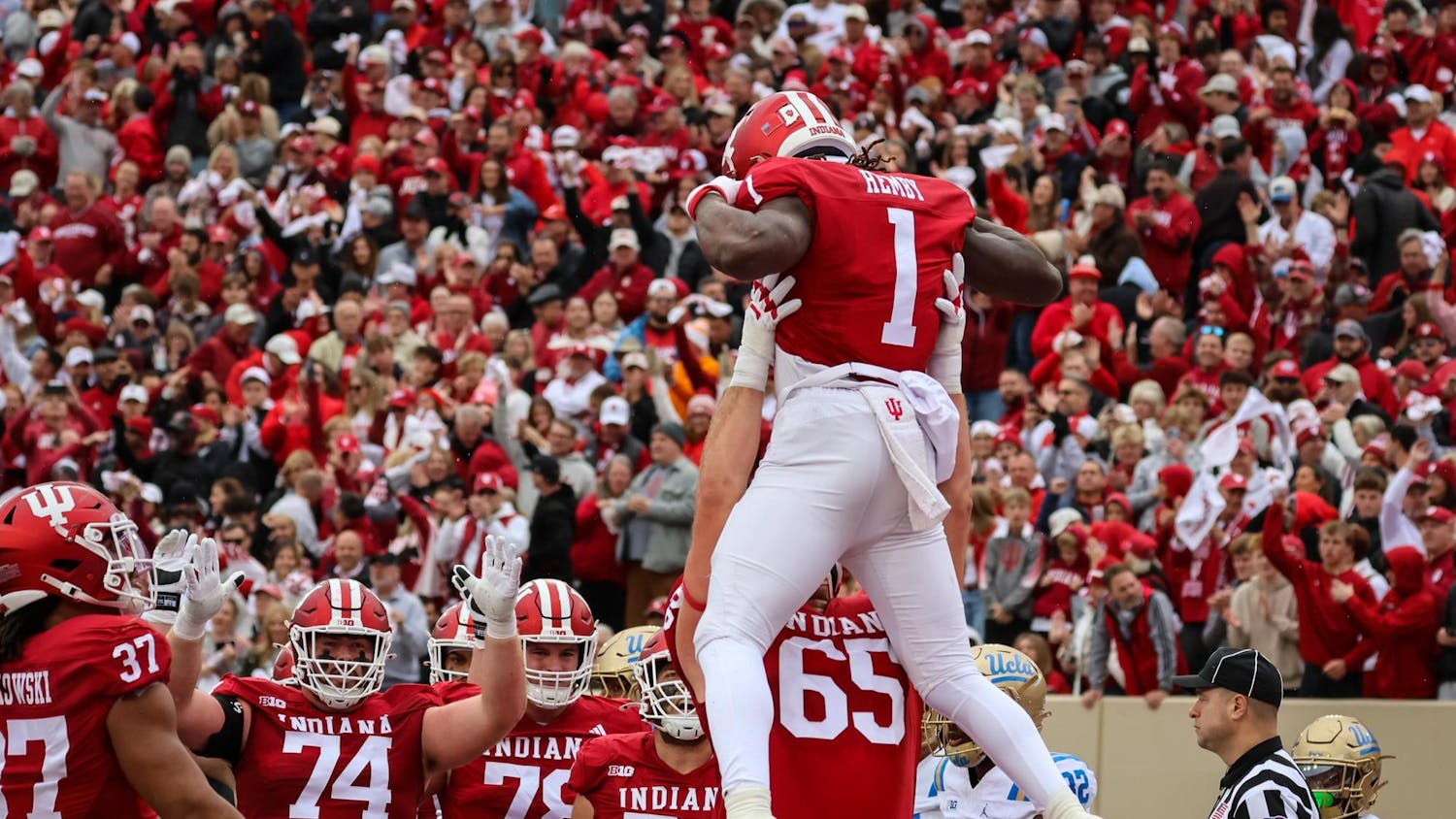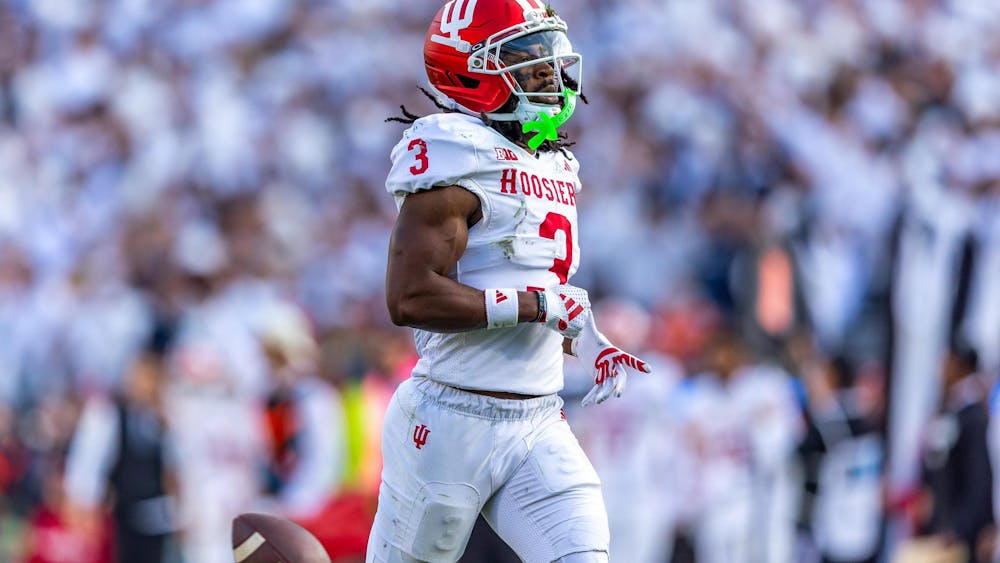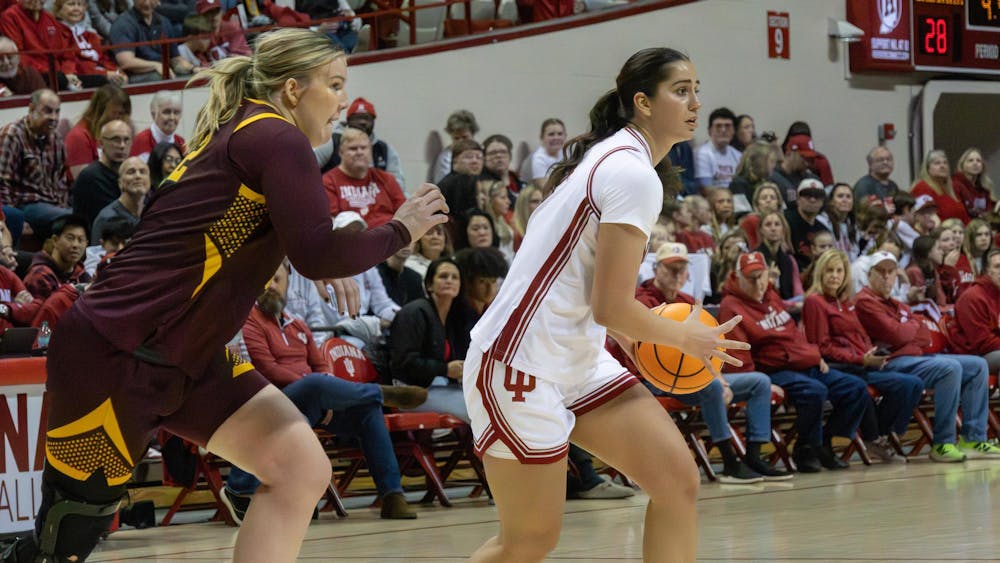Tossing a marshmallow into his mouth after his teams' LEGO robot went awry, Bloomington High School South senior Cole Skelton shrugged his shoulders and began packing up gear. A National Science Olympiad veteran, Skelton knows how to pick his battles. \n"It worked well when we weren't in the competition," he said. \nSkelton probably scored a minus 180, his teammate, South junior Clive Holbrook said. \n"But at least the robot followed the line," Skelton said, " ... that's the important part," -- well that, and getting back in time for Bloomington High School's senior prom. Skelton explained, because compared to the state competition, the rules are stricter, the competition stronger and "everything is knocked up a notch."\nSkelton and Holbrook were among thousands taking part in Saturday's National Science Olympiad tournament at IU. Across campus Saturday, middle and high school students made last minute adjustments to robots and egg-smashing cars, while others huddled around lab stations solving problems. \nThough the competition was intense, each National Science Olympiad team found ways to keep spirits high. In Bloomington High School South's homeroom, students rank each event with a smiley face for a good result and a frown for when the result wasn't so good. \nOther teams found unity in their apparel. \nAlaska high schoolers attached stuffed toy salmon to baseball caps. The Pembroke Hill team, from Connecticut, sported t-shirts reading "pH (Pembroke Hill) -- Neutralizing the Competition." Others' t-shirts read equally brainy statements such as "Quantum Ducks," "Keeling Kicks Mass," and "Talk Nerdy to Me." \nAnd those who missed seeing the National Science Olympiad events can still dress the part. Team members from Minnesota said their cow-print patterned lab coats can be ordered online at http://www.thelabrat.com. \nAt the bridge and tower building competition in Woodburn Hall 100, each broken toothpick-induced crack was followed by cheers from the audience and flashes from snapping cameras. The competition begins with fifteen kilograms of sand gradually dumped into a bucket attached underneath the bridge or tower. Success was dependent on not so much whether the bridge or tower would break, but rather when it broke and how much the structure weighed. \nOver in the Wildermuth sports center, a judge sprawling on the gym floor carefully measured the distance between an uncooked egg attached to the front of a wheeled vehicle and a large board serving as a wall. In the "Scrambler" competition, a crack is an unwelcome sound. The large, almost-flat vehicle has CDs for wheels and is propelled forward as an attached weight drops and propels it forward, hopefully to just shy of the wall. \nIn Fine Arts 015 at the "Robot Ramble," two students gently placed their robotic vehicle on a mat and untangle wires running to handmade video game controllers. \nThe robot used a little rotating flap to scoop up cork towers, ping-pong balls and then a pink golf ball. Pausing and unfolding an arm like a preying mantis, the robot stuck the end of the arm onto a CD and sucked it inside. The students then backed the robot up to a Plexiglas box containing three balloons and, extending up and over like a dump truck, the robot drops the collected items into the bin with a sharp "pop-pop-pop." Extra credit is given for popping the balloons. \nBut success isn't just about winning competitions. A lot of the benefits come from building the robot or bridge and practicing for the testing events, Susan Williams, Assistant Coach for a high school team from Russell, KY., said. Students spend hours in preparation for the Science Olympiad and they "have a lot more ownership when it's their own design." \n"NSO is a lot of problem solving," Williams said, "And a bit of duct tape." \nStudents begin training for the Science Olympiad in September when the new rules come out, coach Kirk Barnett said. With 24 competitions to choose from, pairing students with events is the first challenge. It's easier to pick students for the testing events, which are more like classroom activities, he said. "Students want to build a robot until they start to build a robot," Barnett said. "Not everyone can build a robot. [Each competition] is a matter of figuring out how to do it -- and that's not always by conventional means." \nWith only 600 students, Russell Independent High School was one of the smallest public schools in the competition, but this is the third year the team has won state and was able to compete in the national tournament. The goal for his team, Barnett said, is to beat the other school from Kentucky and to place in the top half. \n"We found we can be very successful in six or seven events, but to win overall you have to be incredibly good at all twenty-four and we're still working on that." \nBridge-builder Matt Columbus, a Russell high school freshman, said he has a love/hate relationship with his event. \n"I like seeing what I can come up with and with what everyone else has ... it's an intense competition," he said. \nCompetitions may be intense, but each National Science Olympiad team found ways to keep spirits high. In Bloomington High School South's homeroom, students rank each event with a smiley face for a good result and a frown for when the result wasn't so good. \nOther teams found unity in their apparel. \nAlaska high schoolers attached stuffed toy salmon to baseball caps. The Pembroke Hill team, from Connecticut, sported t-shirts reading "pH (Pembroke Hill) -- Neutralizing the Competition." Others' t-shirts read equally brainy statements such as "Quantum Ducks," "Keeling Kicks Mass," and "Talk Nerdy to Me." \nAnd those who missed seeing the National Science Olympiad events can still dress the part. Team members from Minnesota said their cow-print patterned lab coats can be ordered online at http://www.thelabrat.com.
Going for Gold
Duct tape and determination meet at the National Science Olympiad
Get stories like this in your inbox
Subscribe





